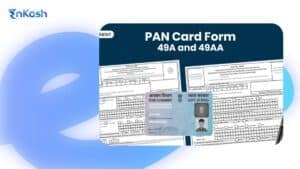Introduction
Did you know that most Indian SMEs face compliance issues simply because they confuse TDS with TCS? One wrong classification can lead to penalties that eat into your profit margins faster than you’d expect.
Missed deductions or collections can expose your business to penalties, create vendor friction, and result in disallowed expenses. Late reconciliations drain valuable resources, while statement mismatches delay settlements. Understanding TDS (Tax Deducted at Source) and TCS (Tax Collected at Source) helps keep your books accurate, protects profit margins, and maintains partner trust.
In this blog, you’ll learn the TDS full form, the TCS full form, what each means in practical terms, and most importantly, what the difference is between TDS and TCS. We’ll also cover compliance basics, GST linkages, real-world examples, and tips to stay on top of your obligations.
What is TDS (Tax Deducted at Source)?
TDS (Tax Deducted at Source) is a system under the Income Tax Act, 1961, that ensures tax collection at the time of payment rather than waiting until year-end. As the payer (deductor), you deduct tax at prescribed rates on certain payments and deposit it with the government. The recipient (deductee) receives the net amount and later claims this credit when filing their income tax return.
The government introduced TDS to collect revenue early, reduce tax evasion, and maintain clear transaction records. By linking tax collection to actual cash flows, this system spreads collections evenly throughout the year and makes every deduction traceable.
For businesses, TDS applies to routine transactions like contractor payments above thresholds, monthly office rent, professional fees, commission or brokerage, and salaries. For example, if you pay a contractor ₹1,00,000 and the TDS rate is 2%, you transfer ₹98,000 to the contractor and deposit ₹2,000 with the government. The contractor later adjusts this amount against their tax liability.
While TDS mainly applies under income tax, there are also TDS provisions under GST for certain government and notified entity transactions. These operate independently, with separate rates, compliance rules, and filing procedures.
What is TCS (Tax Collected at Source)?
TCS stands for Tax Collected at Source. You collect a specified percentage of tax from the buyer at the time of sale and deposit it with the government under the Income Tax Act, 1961. In practice, you act as the collector on notified transactions, add TCS to the invoice, and collect it along with the sale value. The buyer later claims this tax as a credit while filing their income tax return.
The purpose of TCS is to secure early revenue for the exchequer, reduce evasion in sensitive trades, and maintain a clear trail of high-value transactions. The tax is collected at the point of sale and mapped to the buyer’s PAN, which improves transparency and makes reconciliation easier during return filing.
For Indian SMEs, TCS commonly appears on transactions like the sale of scrap, certain forest produce such as tendu leaves, and the sale of motor vehicles, where specified conditions are met. Certain broader “sale of goods” transactions can also attract TCS once the value crosses the notified limits in a financial year. The buyer receives credit for the collected amount, which offsets their final tax payable.
Operationally, you collect TCS from the buyer, deposit it within due dates using the prescribed challan, and include it in periodic TCS statements. After filing, you issue the TCS certificate so that they can claim credit from the buyer for credit claiming. Mirror these flows in your accounting as TCS payable until remittance to ensure clean reconciliation between books, challans, and filed statements.
Note that TCS under the Income-tax Act is distinct from TCS provisions in GST, which apply in specific contexts like e-commerce and follow a different statutory framework. Keep income-tax TCS and GST mechanisms separate in your processes and ledger treatment to prevent misclassification and ease audits.
Key Differences at a Glance
Aspect |
TDS |
TCS |
|---|---|---|
Who acts |
Payer deducts |
Seller collects |
When |
At payment |
At sale |
Common examples |
Salaries, contractor fees |
Scrap sales, motor vehicles |
These differences become clearer when you see how they apply in real business scenarios.
Real‑World examples for SMEs
Manufacturer Paying Contractors
You run a small manufacturing unit and hire contractors for fabrication, packing, and in-plant logistics. When you pay these contractors, you must deduct TDS at the applicable rate on specified services, subject to thresholds and conditions under the Income Tax Act. You then deposit the tax by the due date through the income tax portal, file the relevant quarterly TDS statement, and issue Form 16A so the contractor can view credit in Form 26AS and claim it in the return. Keep invoice‑wise challan mapping and validate vendor PANs in master data to avoid higher default rates and downstream credit mismatches during reconciliation.
Scrap Dealer Collecting TCS
If you trade in scrap, you collect TCS from the buyer at the time of sale on notified transactions, add it to the invoice, and deposit it within the timelines prescribed under the Income Tax Act. After filing the quarterly TCS statement (Form 27EQ), you issue the TCS certificate (Form 27D) so the buyer can claim credit in their income tax return. Maintain a clear TCS payable ledger and reconcile buyer‑wise collections with challans and statements to keep audits smooth and credits usable without delay.
Beyond income-tax provisions, both TDS and TCS also exist under GST, but with different rules, rates, and compliance processes.
TDS and TCS under GST run separately from income tax, with their own returns, rates, and ledgers, so track them independently in books and portals. TDS under GST applies when notified entities (such as government departments, PSUs, or local authorities) make payments for taxable supplies under contracts above the ₹2.5 lakh threshold. TCS under GST applies when an e-commerce operator collects tax on supplies made through its platform. These credits flow to your GST electronic ledgers, not to Form 26AS.
TDS Under GST
TDS under GST is deducted by government departments, local authorities, PSUs, and other notified entities on taxable supplies where the contract value typically exceeds ₹2.5 lakh. The standard rate is 2% of the taxable value, deposited monthly with a GSTR‑7 filing.
After filing, a TDS certificate (GSTR‑7A) is generated. As a supplier, you’ll see this credit in your electronic cash ledger and can use it to pay future GST liabilities.
TCS Under GST
TCS under GST is collected by e-commerce operators at 1% on the net value of taxable supplies routed through their platform, after adjusting for returns. Operators deposit this monthly and file GSTR‑8; once filed, the TCS appears in your electronic cash ledger for set‑off. If you sell via marketplaces, expect TCS on settlements and reconcile operator statements with GSTR‑8 credits.
Key Differences from Income Tax
Treat income tax, TDS/TCS, and GST TDS/TCS as different systems with separate ledgers, returns, and reconciliation cycles. For government supplies, confirm if GST TDS applies and verify the certificate; for marketplace sales, match TCS collected to payouts and claim it promptly. Keep distinct workflows so credits don’t get stranded.
Returns and Compliance
Filing Requirements
For income-tax TDS/TCS compliance, ensure your TAN is active and capture correct PANs. Configure section-wise rates and thresholds so deductions or collections trigger on time. Deposit monthly via the e-Pay Tax facility by the 7th of the following month. Map each challan to the underlying payment or invoice in your ledgers so quarter end reconciliation remains clean.
Quarterly Statement Forms:
- TDS forms: 24Q (salary), 26Q (domestic non-salary), and 27Q (non-resident)
- TCS forms: 27EQ
After filing, issue certificates on time, Form 16 by 15 June, and Form 16A and Form 27D within 15 days from the due date of the respective quarterly statements, so counterparties can see and claim credit; reconcile these with Form 26AS/AIS to avoid credit mismatches.
Penalties and Interest for Delays
TDS Interest Rates:
- 1% per month for non-deduction (from date deductible to actual deduction)
- 1.5% per month for late remittance (from deduction to payment) under section 201(1A)
Additional Penalties:
- ₹200 per day fee under section 234E until statement is filed (capped at TDS/TCS amount)
- Additional penalties may apply for filing failures or incorrect statements under various sections of the Income Tax Act (subject to relief on timely correction)
- From FY 2025–26, TCS interest mirrors TDS: For TCS, interest is charged at 1% per month (or part thereof) from the date the tax was collectible until it is deposited with the government, as per Section 206C(7)
Note that sections 206AB/206CCA prescribe higher TDS/TCS rates for ‘specified persons’ (such as non-filers of income tax returns). Businesses must screen counterparties to avoid higher rate exposure. Run a month‑quarter cadence, validate masters at month‑start, deposit by the 7th, reconcile challans mid‑month, and pre‑validate statement data before filing backed by TRACES downloads and an exceptions log to keep certificates on time, credits usable, and audits low‑friction.
Common Mistakes and Misunderstandings
The most frequent pitfall is confusing TDS and TCS, leading to wrong actions at the wrong stage. This results in deducting when you should collect (or vice versa), creating duplicate efforts during corrections. Another common error is misreading thresholds or exceptions and either skipping deduction/collection entirely or applying it when it doesn’t apply.
Rate and section misclassification is also routine: treating a contractor payment as professional fees or computing on the wrong base amount leads to short deduction and downstream notices. PAN hygiene drives outcomes, so missing or invalid PANs trigger higher default rates and credit problems for counterparties.
Key process lapses that create costly misses:
- Delayed deposits and late quarterly statements
- Inaccurate filings and delayed certificates
- Weak challan-to-invoice mapping and poor master data
Treating income-tax TDS/TCS and GST TDS/TCS as interchangeable
These issues cascade into interest, late fees, and blocked tax credits. Remember that credits post to different ledgers and follow different return cycles, so combining them in books or workflows strands balances and complicates audits.
Conclusion
TDS and TCS are early-collection mechanisms that keep tax compliance predictable and cash flows transparent. Apply the right section and rate, capture valid PANs, deposit on time, file accurate quarterly statements, and issue certificates promptly so counterparties can use credits without follow-ups.
Strong operational basics protect both reputation and working capital. Clean master data, maker-checker reviews, challan-wise mapping, and monthly reconciliations reduce interest, late fees, and notices while speeding up vendor payments and buyer settlements. With a simple cadence, light automation, and clear SOPs for teams, compliance becomes routine rather than reactive, freeing time for growth while keeping audits low-friction and relationships trust-first.
FAQs
1. What is the full form of TDS?
The full form of TDS is Tax Deducted at Source. It is a system where tax is deducted by the payer when making certain payments such as salary, contractor fees, rent, or professional charges, and then deposited with the government.
2. What is the full form of TCS in income tax?
The full form of TCS is Tax Collected at Source. In this system, the seller collects a specific percentage of tax from the buyer at the time of sale and deposits it with the government.
3. What is the difference between TDS and TCS?
The key difference is who is responsible. In TDS, the payer deducts tax before making payment. In TCS, the seller collects tax at the time of sale. Both are early tax collection tools, but they apply in different situations.
4. What does TCS mean in tax?
TCS means Tax Collected at Source. It is a seller-side mechanism where tax is collected from the buyer on notified transactions like scrap sales, motor vehicle sales, or certain forest produce, and then deposited with the government.
5. How is TDS different from TCS in GST?
Under GST, TDS is deducted by government bodies and notified entities when making payments under certain contracts, while TCS under GST is collected by e-commerce operators on supplies made through their platforms. Both flow into GST ledgers, not income tax Form 26AS.
6. What is a TCS return?
A TCS return is a quarterly statement filed by the seller who has collected TCS. It is filed in Form 27EQ, and once processed, the seller must issue a TCS certificate (Form 27D) so that the buyer can claim credit.
7. What is a TDS certificate?
A TDS certificate is proof issued by the deductor to the deductee, showing how much tax has been deducted and deposited with the government. Common certificates include Form 16 for salary and Form 16A for other payments.
8. What happens if TDS or TCS is not deposited on time?
Delay attracts interest, late filing fees, and penalties. For TDS, interest is 1% per month for non-deduction and 1.5% per month for late payment. For TCS, interest is 1% per month for late collection or remittance.
9. How should SMEs account for TDS payables and TCS payables?
TDS deducted should be shown as a liability until deposited with the government, while TCS collected should be recorded as TCS payables until remitted. Proper challan mapping and reconciliation help avoid mismatches in statements and audits.
10. Can buyers and sellers claim credit for TDS and TCS?
Yes. The deductee (in case of TDS) and the buyer (in case of TCS) can claim the tax deducted or collected as credit while filing their income tax returns, provided the correct PAN details and certificates are available.
11. What is TCS under GST, and how is it different from income-tax TCS?
TCS under GST is collected only by e-commerce operators on taxable supplies made through their platforms. It has its own return filing process (GSTR-8) and credits post to the GST electronic cash ledger. This is separate from TCS in income tax, which applies to notified goods transactions.












